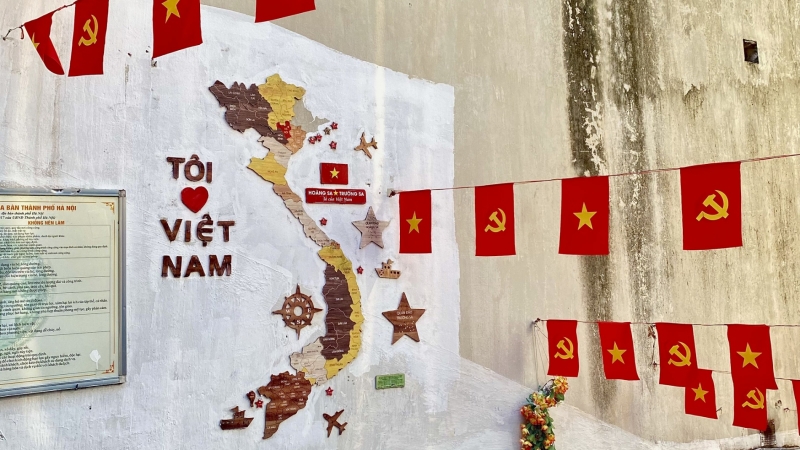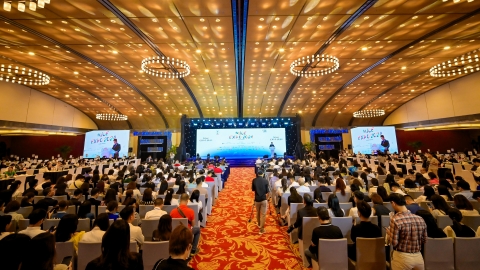Hanoi is the capital, the heart of the whole country, the national political and administrative center, a major center of culture, science, education, economy and international trade.
"No matter where I go, my heart still remembers Hanoi"
Our Hanoi, the beloved capital, a time of bombs and bullets, a time of peace"
The image of a small street with rows of old tamarind trees, the echoing cries of street vendors, and summer afternoons playing by the lake will make their hearts flutter, reminding the elderly of a time when Hanoi was poor but dear. As for the younger generation, this will be an exciting journey of discovery. They will be surprised by a life where technology has not yet penetrated, where people are warmer, and traditional values are respected.

Mentioning Hanoi is mentioning the land of a thousand years of civilization with the legend of the flying dragon forming the land of Thang Long more than 1000 years ago, but in the 90s, Hanoi was simpler than ever.
The name Hanoi is about 170 years old and during that nearly two centuries, Hanoi has quietly changed with the changes of the times and become the modern city it is today. When King Dong Khanh gave the French the right to establish a "concession city", Hanoi really had strong changes.
However, at that time, Hanoi was still neat and tidy in every street corner. Hanoi at that time still retained its ancient features, old architecture, old customs and practices. Hanoi was the parallel development of tradition and modernity.

Means of transport of the ancient capital people
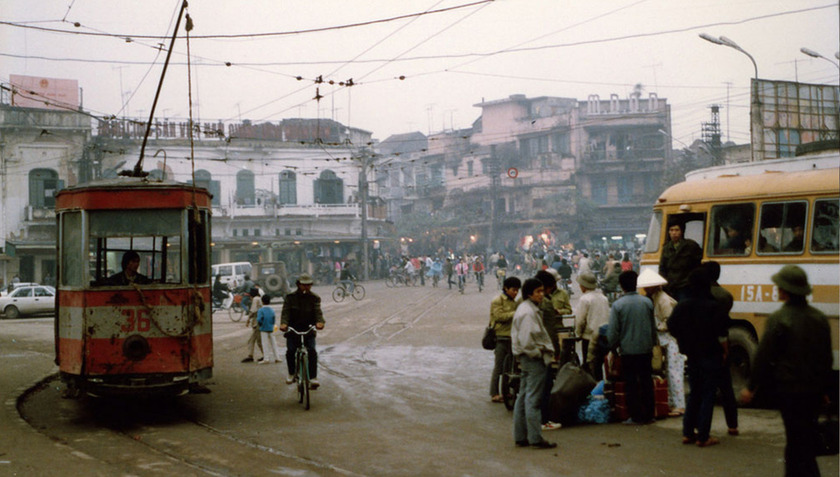
Inside the old, time-worn appearance, there are still priceless values, a place that holds many memories of a simple Hanoi.
From the clear blue sky, Hanoi in the early 1990s appeared with an unusually peaceful beauty. There were no skyscrapers, the open sky seemed to embrace the entire city. The Red River wound around the green fields, creating a beautiful ink painting. The small streets with rows of lush old trees, the houses with bright red tiled roofs, all had a simple, rustic beauty.

A warm afternoon
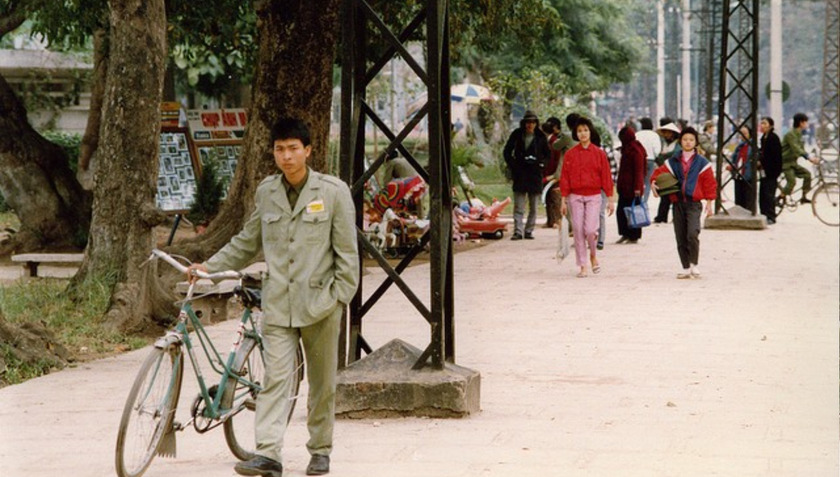
Motorbikes and cars have appeared here and there, but still not enough to overshadow the familiar image of bicycles.

Life goes by slowly and leisurely
Hanoi in 1991-1993, a peaceful Hanoi that touched the heart. The streets at that time only had the clanging sound of cyclos carrying passengers, the clattering sound of workers pedaling bicycles. Life passed slowly and leisurely. A bowl of hot and fragrant pho cost only 3,000 VND, a glass of cold draft beer cost 1,600 VND, enough to sit for hours on the sidewalk, chatting with friends.
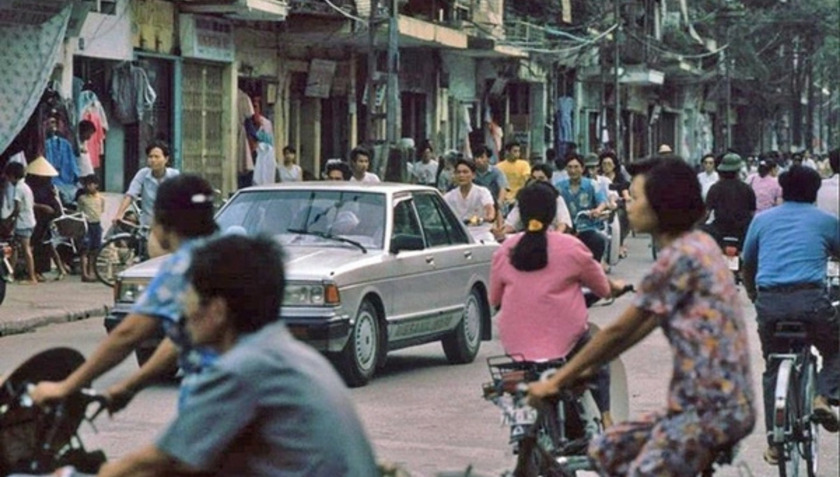
Old memories are preserved in every old photo
At that time, the Vietnamese economy was in a transitional period. Hanoi had just opened the door to innovation, still bearing the imprint of the subsidy period. The daily life of the people at that time was extremely warm. In the morning, the cries of banh gio and banh cuon echoed throughout the streets. People cycled to the market, cooking rustic dishes themselves. In the afternoon, the whole family gathered around the black and white TV, watching simple TV series together.

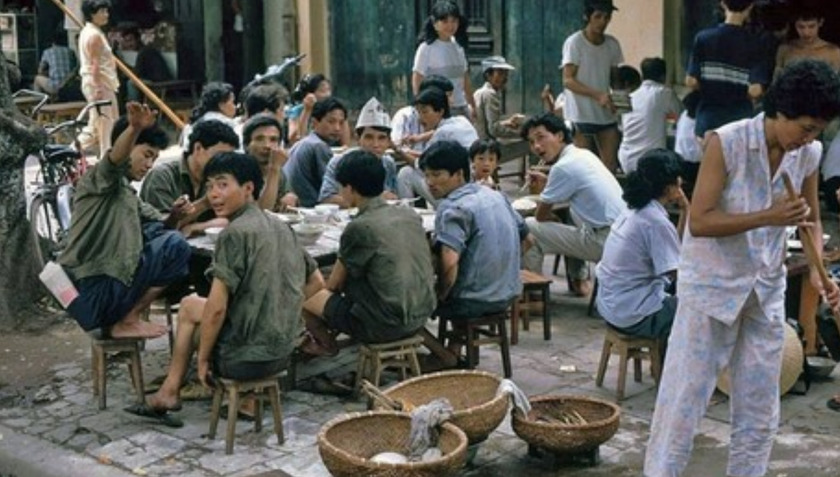
At that time, craft villagers from all over flocked to the outskirts of Thang Long to make a living, gathering to buy and sell.
Ancient Hanoi had a citadel, a market, a port, 36 streets of trading and craftsmen, suburban markets, and villages specializing in growing and processing agricultural products. Talented people from all over the country flocked to Thang Long - Hanoi, where they competed, competed in intelligence and talent, creating a unique talent that only Hanoians had.
"Hanoi thirty-six streets
"Pure white Rice, Sugar, and Salt Stores"
In the streets of old Hanoi, “all kinds of different goods were sold” and “each street sold its own kind of goods, exactly like the companies or guilds in European cities.” According to Paul Bourde, a reporter for the Times, around 1883, the whole city turned into a large open-air market every time there was a market, and that market was held every six days. According to Paul Bourde’s description, during those markets, all kinds of merchants and craftsmen from neighboring villages flocked into the city. Silk sellers gathered on Hang Dao Street, goldsmiths gathered on Hang Dong Street, hat makers gathered on Hang Non Street… The villagers sat right on the street, their goods placed in a piece of cloth or in a basket, such as fruits, meat, groceries, medicine, pottery, fish… Every silk market day (the 1st and 6th of the lunar calendar), “Hang Dao Street suddenly became splendid and brilliant like Alibaba’s cave”.

As the whole country innovates, enters the market economy and integrates internationally, Hanoi is transforming itself with rapid urbanization, but old memories are still there.
With the above urbanization process, the appearance of Hanoi has changed profoundly, from a "half-rural, half-urban" city at the end of the 17th century to a "miniature Paris" (Petit Paris), "Capital of Tonkin", "Capital of the Indochina Federation" during the French colonial period.
It is not by chance that in the song Remembering Hanoi, musician Hoang Hiep wrote: "Even if I go to the four corners of the world, my heart still remembers Hanoi." Because that beloved capital has entered the hearts of millions of Vietnamese people, becoming the home of countless children living far away from home. In the hustle and bustle of modern life, people still do not forget to look for a Hanoi with its ancient beauty, a peaceful and profound beauty.







